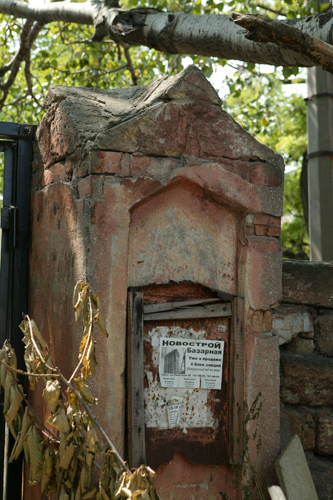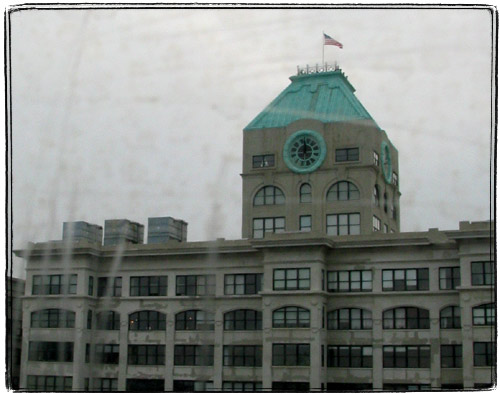When I think about Odessa, I often remember the title of Robert Heinlen’s novel, “The Door into Summer“. Odessa is a summer city. If I were to pick one word to describe it in the summer, it would be sun-dappled.
The soil in Odessa is pretty bad, and there aren’t any local sources of fresh water. Because of that there are only three types of trees that thrive there: acacia, sycamore (locally known as “shameless” trees because they shed their bark), and horse chestnut. Acacia is one of the symbols of Odessa, and horse chestnut is that of Kiev. These trees are thriving in Odessa, and many hundred year old specimens provide a lot of shade.
The tree shade and the bright sun bathe everything in these spots of light, like in Renoir’s La Moulin de la Galette.
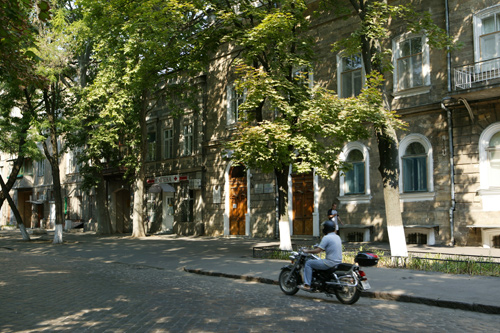
Here’s a very old acacia on the corner of the street where I grew up. Notice the parking sign: in Odessa the sidewalks are so wide that cars can be parked on them. Also, they are now selling melons out of cages that are locked for the night. Acacia blossoms cover all the sidewalks and produce and intoxicating aroma.
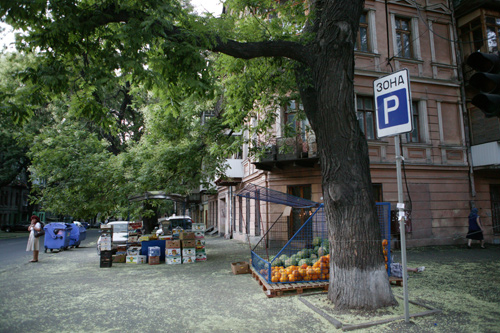
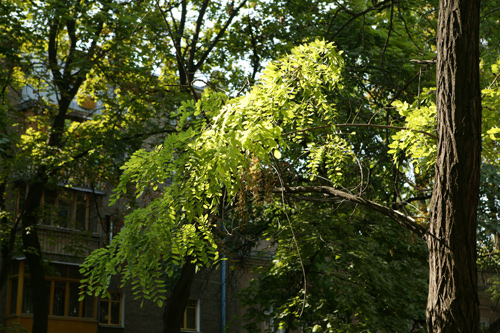
As I mentioned before, Odessa was built on the grand scale and by the best architects. Even the lesser buildings are very decorated. Atlases were very popular.
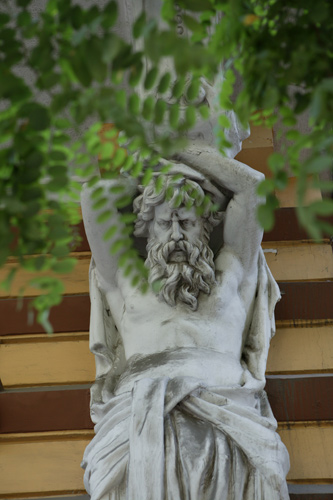
Apparently the current location of Odessa used to be under the Black sea, and the bedrock consists of a somewhat soft yellow sedimentary rock formed out of shells of sea creatures. It’s a type of limestone, I guess. This rock turned out to be a perfect building material: cheap and abundant, soft enough to cut and carve, but durable enough to build with, not too heavy, very good for thermal and sound isolation. So many buildings were built this stone that the quarries below the city formed a humongous labyrinth known as “catacombs“. It was used by contraband smugglers and WWII guerrilla fighters. It would have been super easy to build a subway in Odessa, but somehow it never happened.
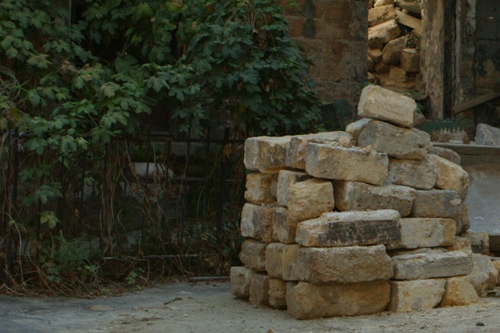
There are two architectural features of the old limestone buildings that became very important in the Odessa way of life: balconies and courtyards. Just like the wide sidewalks, these are the artifacts of the town mostly built in 1800s, in the era of horse buggies, no air conditioning, and gas light. Balconies provided a breath of fresh air, and internal courtyards let architects let in light into all apartments.
Some balconies are very charming, with cast iron railings and pleasing shapes and aging gracefully.
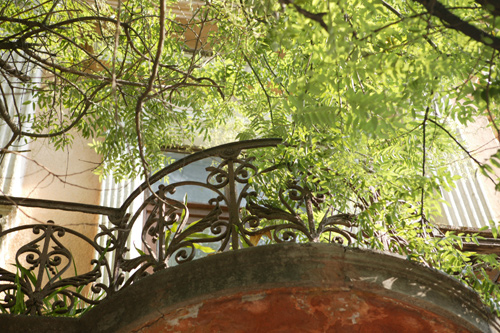
Some did not survive and were replaced by ugly shitboxes.
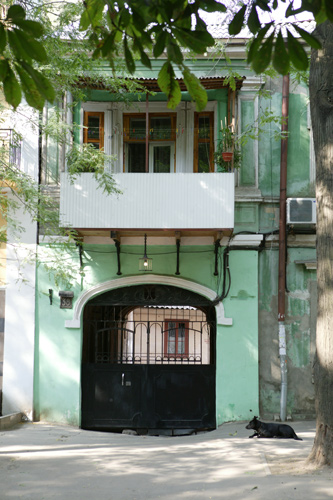
Some are unsafe Frankenstein monsters.
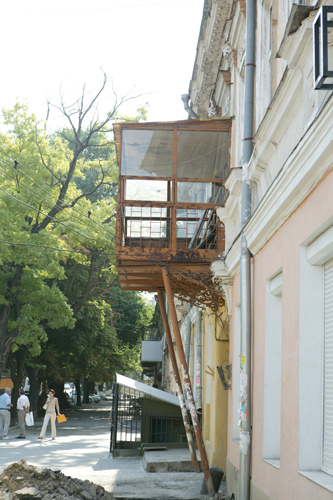
Some are huge, with fancy statues, and in horrible state of disrepair.
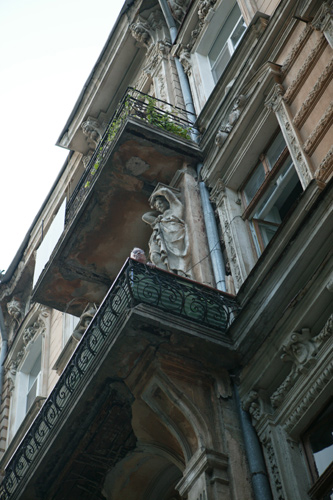
Some are maintained.
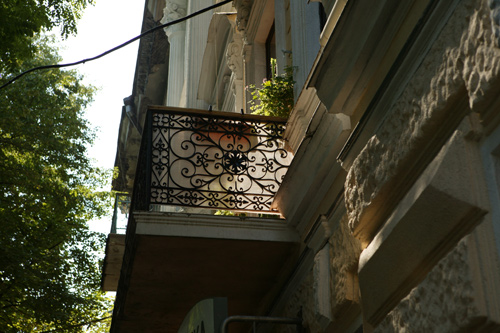
Some are elegant, curved around gorgeous bay windows. Notice the hanging laundry.
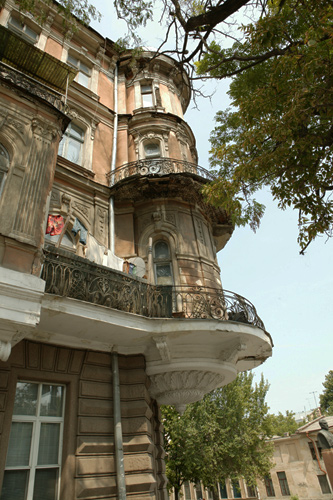
Some instead of laundry are draped in grapevines.
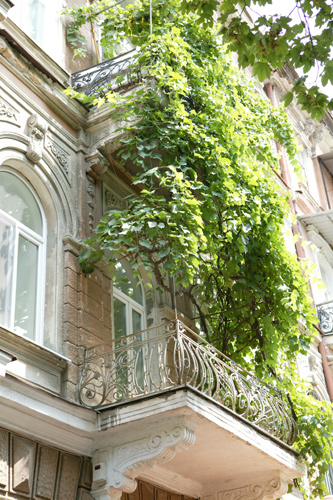
I have no idea how these grapevines survive: they grow in the street, are peed on by dogs and are never watered.
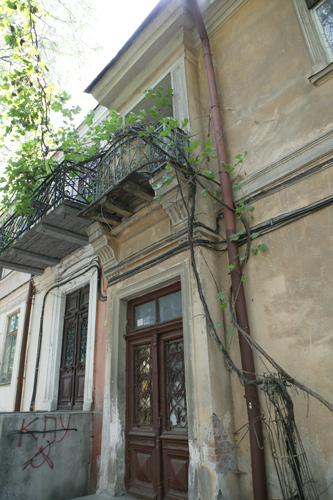
Some of the most gorgeous buildings with the most awesome balconies are in such state of disrepair, that in New York they would have been immediately boarded up, but yet there are people living there…
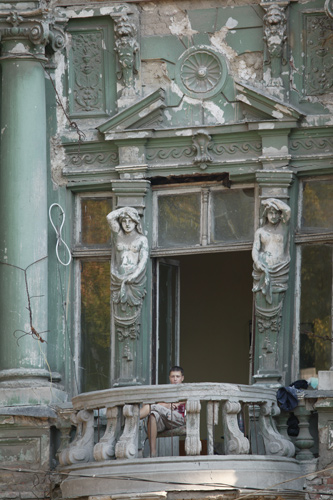
These old buildings are what New York realtors are referring to as “pre-war”: they have very tall ceilings, big rooms, parquet floors, fireplaces, and other bourgeoisie niceties. After the revolution most of these apartments where turned into communal flats: instead of a single family with help, now 5-7 families were crammed into it. The process kind of reversed itself in the 90s, with rich people buying out communal dwellers, but some still remain: here’s a picture of the doorbells on one door. You can visit a site about communal living in Russia. Interestingly enough, despite the Marxist spirit, in communal apartments even the doorbells were hooked up to separate electric meters, and the excessive use of a lightbulb in bathroom was a major point of contention.
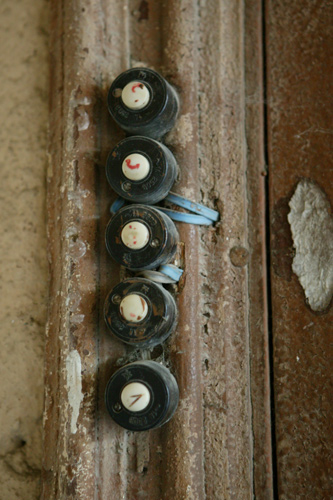
These buildings are old: many have horse hitches out front:
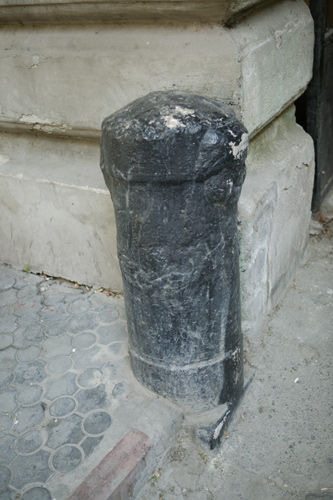
Once you tied your horse down, you enter the building through a gate.
Sometimes the gate is old and beautiful.
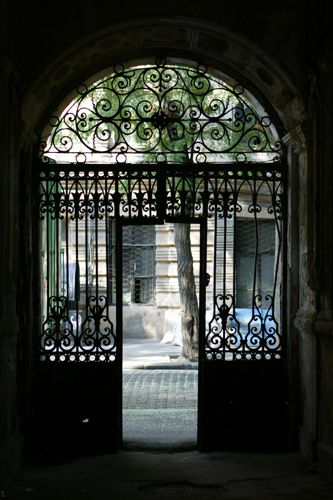
Sometimes it was replaced by a horrible modern monstrosity painted with signs like “angry dog” and “there’s no toilet here”.
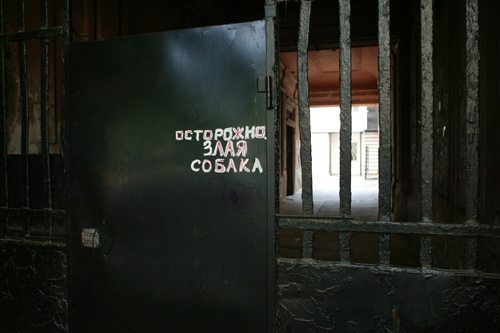
Sometimes it’s missing altogether.
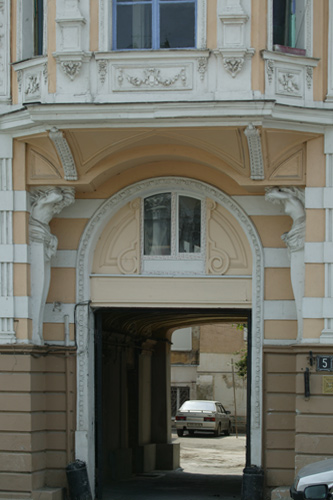
The gate leads you through a passageway. What will you find in that passageway?
A bunch of semi-destroyed soviet-era mailboxes. I am not sure if they are still in use. Here’s one of the better preserved specimen.
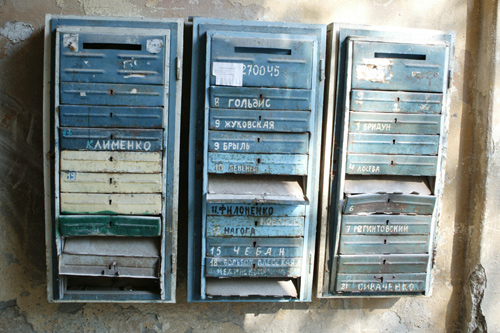
The passageway, a utility space, often has interesting ceilings, which are almost always mostly ruined.
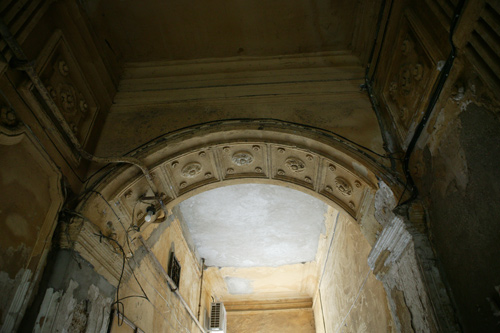
Some are less ornate though.
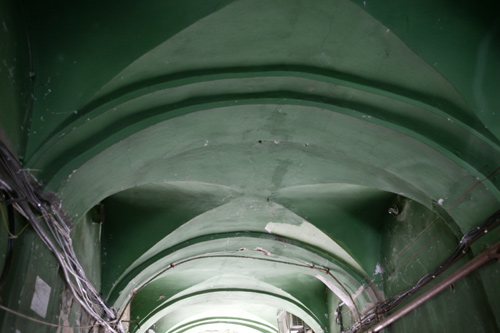
Often there are very cool windows within the passageways.
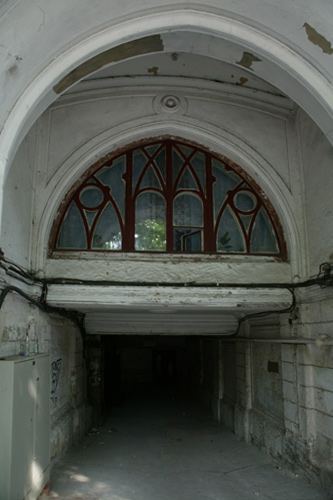
The passageway will lead you into the yard. There will be entrances to apartments, parked cars, laundry.
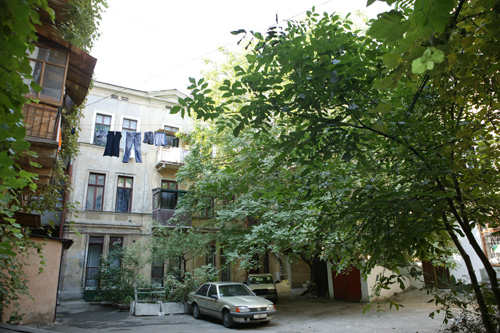
Here’s something that used to be very common, but is actually a rarity now: drying plastic bags.
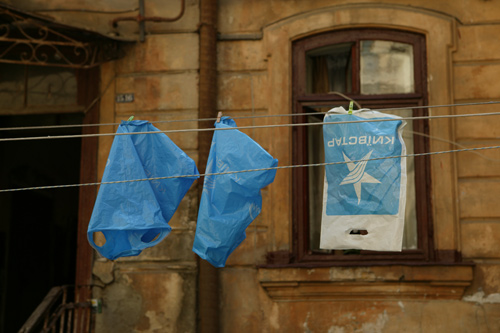
Some more cars and a kid riding a bike.
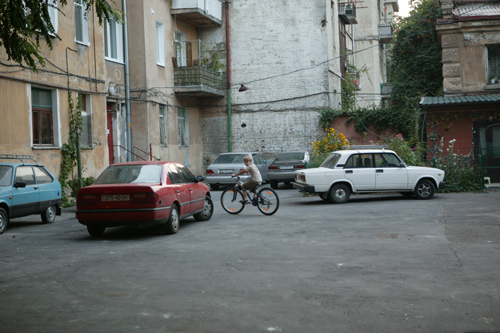
Grapevines, cats, old cars.
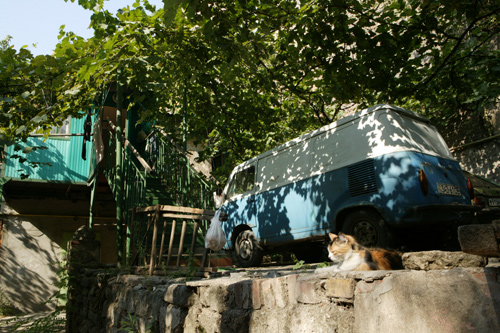
Restored all cars and walls that are in bad need of restoration.
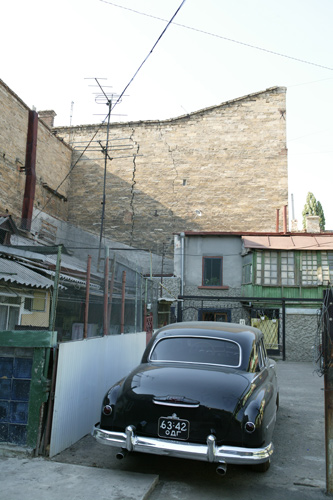
Sleeping dogs and more drying laundry.
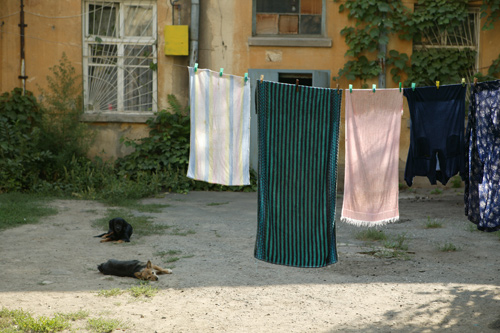
A non-functioning fountain.
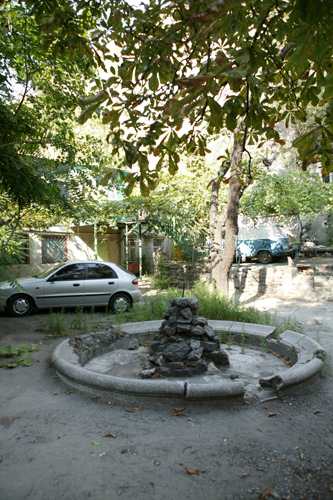
A little garden. This one used to be my grandmother’s.
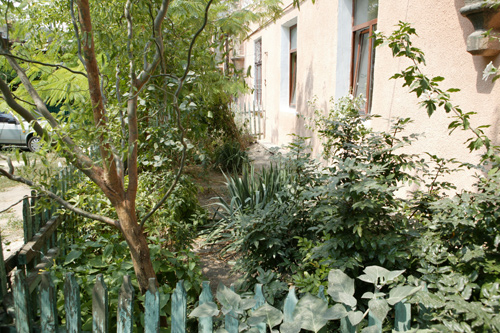
A granny reading a newspaper.
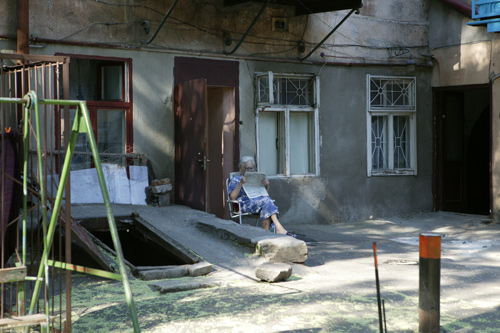
Peeling walls: I distinctly remember this particular wall from my childhood, it used to look exactly the same. It’s a testament to the quality of work of the old builders that with next to zero maintenance these buildings survive.
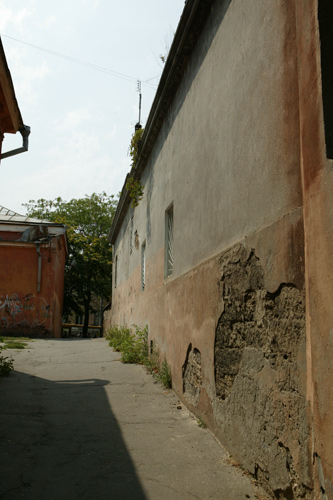
A seemingly functional pigeon coop.
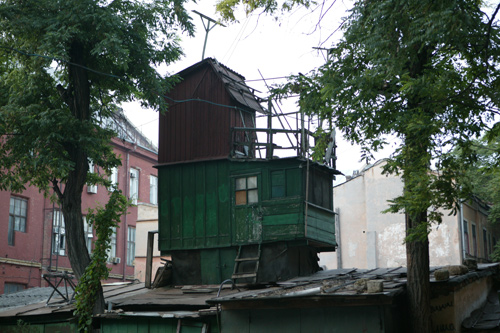
An old tree. These old trees move move in the wind in a very hypnotic manner. Being so tall, they can be used to forecast the size of waves in the sea by the speed at which the tops of them move.
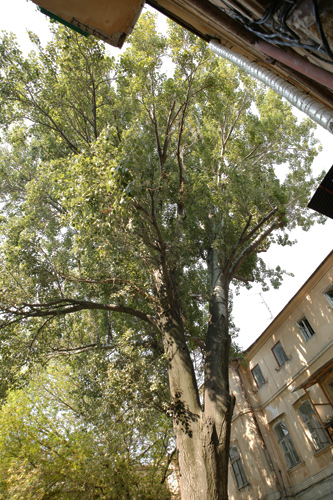
A decorative drinking well. I’m not sure, but it kind of looks like it could have been a real well once.
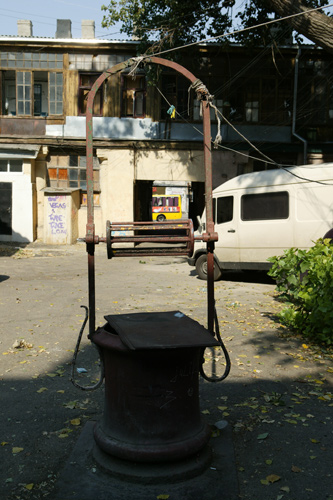
A woman feeding cats who will tell you to stop taking stupid pictures like the dumbass that you are and go and do something productive.
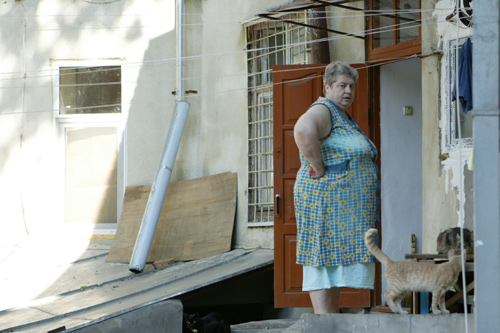
Walls with WWII bullet holes. Odessa is one of the few cities granted the designation of hero city for valiant resistance. When the Germans and Romanians entered the city there was a lot of executions.
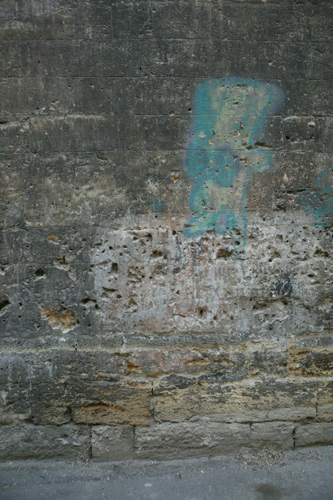
A sad, sad sight: an ad for apartments in a newly constructed building.
